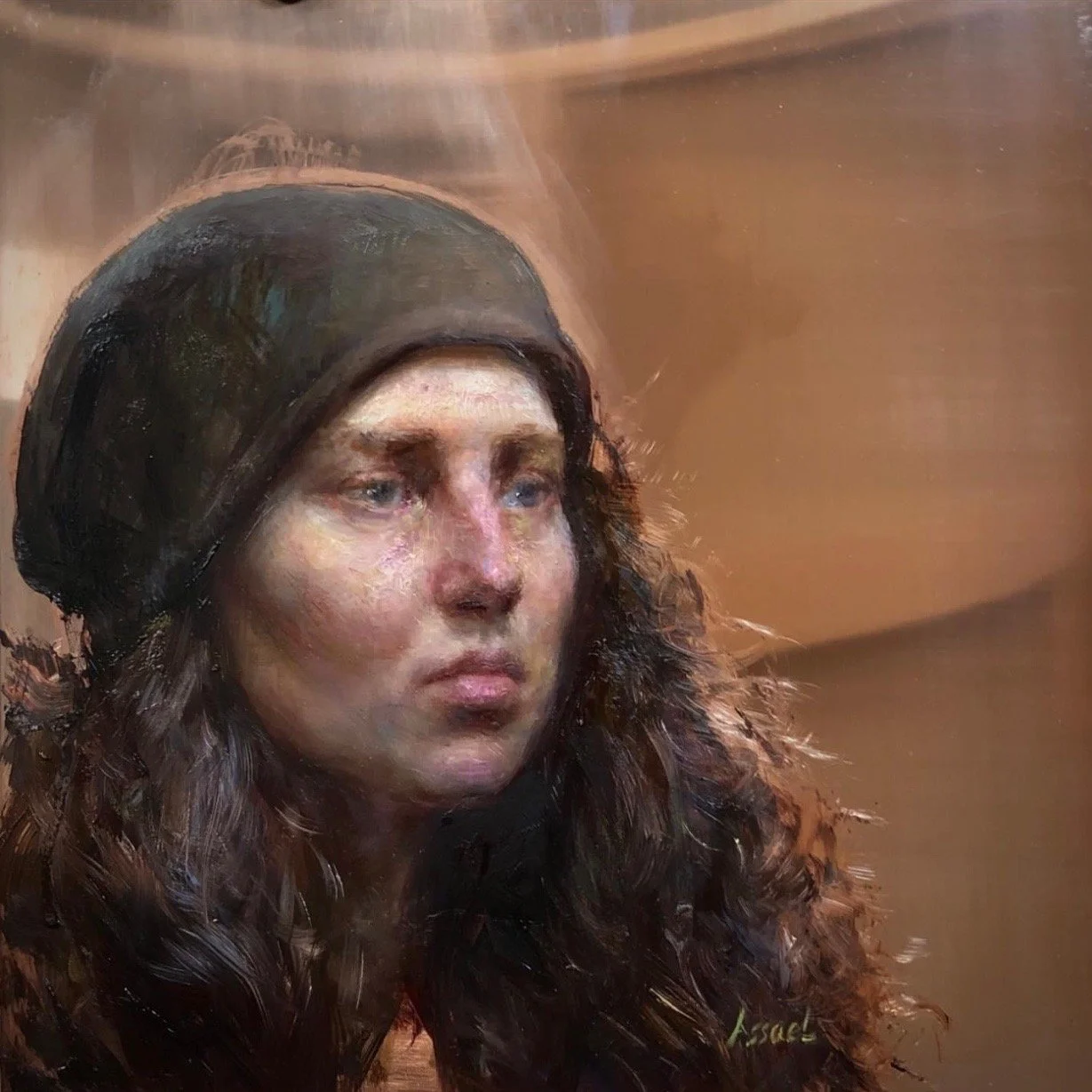Steven will discuss an analytical and dynamic approach to painting the human figure, emphasizing color and value relationships in a related atmosphere.
We will stress the development of form through observation and interpretation of plane shifts projecting and receding from the eye.
Aspects of anatomy, proportion, and movement will be discussed, along with the development of an Alla Prima technique involving scumbling and glazing.
Learning to see is a selective endeavor where understanding is an extension of our mind's eye. We will look at color as value and temperature as form.
This class will paint from a live model. Students can choose a model and paint the portrait or the figure.
We will discuss techniques for dealing with the changes that occur as a model poses, learning to hold and interpret what you see with a selective eye.
● The development of form through observation and interpretation of plane shifts projecting and receding from view.
● An emphasis on color and value relationships and how they relate.
● Aspects of anatomy, proportion, and movement will be discussed along with the development of an Alla Prima technique, which involves scumbling and glazing.
● A simplified method of measuring proportions
● A simple way to see the basic anatomical features of the figure
● Painting the figure with a focus on rhythm and movement
● The development of light and shadow and the reflective properties of flesh
The course will involve lectures, demos, and critiques daily. Steven will discuss materials and craft, light and shadow issues, form, flesh's reflective properties, and other painting aspects. There will also be a discussion of selecting an expression in the moment.
Materials
Choice of supports:
12x16 or 11x14 are both excellent sizes but not larger than 16 x 20
Tone your boards/panels in advance. Tone some boards with a mid-tone red and some with a mid-tone green.
1. Ampersand Smooth Panels Gesso panels, not clay board. You can get these at Dick Blick. These can be toned with Acrylic Paint and then sprayed with shellac (please do this before you come). A very light coat of shellac.
Red boards - tone with acrylic Red oxide
Green boards - tone with Cadmium green or Cadmium Green Light mixed with a bit of raw umber or burnt umber (acrylic paint)
2 . Oil-primed canvas mounted on board
Raphael Premium Archival Oil Primed Linen Panels
(More expensive and takes longer to dry)
Apply a thin layer with a rag with a bit of Gamsol. Keep it thin but not too light in value. Midtone!
Red - Red Oxide
Green - Cadmium Green or Cadmium Green Light mixed with a bit of raw umber or burnt umber.
If you are using lead-primed canvas, do not use acrylic paint on it.
If you want to try painting on Copper:
K & S Copper is good and can be ordered on Amazon
6x6, 8x10 or 9 x 12
24 gauge or lower, not copper that’s too thin
The lower the number, the thicker.
Denatured alcohol
Garlic cloves
Fine grit sandpaper or emery cloth
Brushes:
Various size brushes, i.e., filberts, flats, and fan brushes.
Various size sable brushes, i.e. filberts, fans
Various rounds can be sable or mongoose; the larger ones can be soft bristles such as Silverstone #12.
Rosemary Brushes can be found online, and they carry a variety of types.
*recommended are synthetic Comber brushes #2230 and #331
*Red dot combers
*Rosemary fans see 105
*Rosemary Badger series 37
Long handle ..all sizes
No paper palettes
OIL PAINTS
Titanium White
Flake White (Lead White) (Cremnitz White) (Optional)
Brilliant Yellow Lt or Nickel Yellow Lt. (Rembrandt makes this), or any light, Cool Yellow (Michael Harding) *optional
Naples Yellow Lt (Winsor & Newton)
Lead Tin Yellow (Michael Harding) *optional
Cadmium Yellow Lt
Cadmium Orange
Cadmium Red Lt
Yellow Ochre Light
Transparent Golden Ochre (Winsor & Newton)
Sennelier Brown Pink
Burnt Sienna
AlizarinCrimson
Rose Violet (Holbein) *optional
Transparent Red Oxide
Ultramarine Blue
Prussian Blue
Kings Blue Light
Cadmium Green Light
Viridian Green
Dioxazine Purple
Burnt Umber
Ivory Black
Medium:
Cold Pressed linseed oil
Stand Oil

